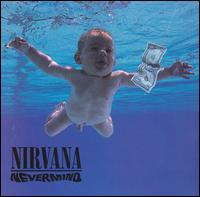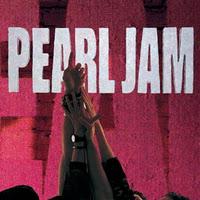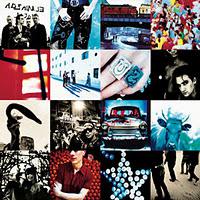Loveless - among the great albums of 1991
There's a new documentary out,
Pearl Jam Twenty, that chronicles the
eponymous band's two decade history. A history that started with a bang with the release of the hugely acclaimed, popular, and influential album,
Ten in late 1991.
Ten became a central document of the
Seattle music scene, on the leading edge of the wave of grunge, a genre that seemed to change the course of rock music. The legacy of
Ten is secure, but what is remarkable is that when taking a broader look back at the music of 1991,
Ten appears to be just one - and not the best one - of many landmark albums from what must certainly be one of the great years in music history.
The Music of 1991 Readers of this blog know of my
strong feelings about judging art. Only with time can we come to value all art, including music. Well, the passage of twenty years is surely time enough (I would think) to put the music of 1991 in proper perspective. The familiar narrative of that time holds that a band from Seattle changed the course of music history with the release of a monumental, epoch-defining album. This band wasn't Pearl Jam, but
Nirvana, and the album the amazing
Nevermind, which was spearheaded by the exceptional single
"Smells Like Teen Spirit." It's been frequently noted that
Nevermind became so popular that it knocked Michael Jackson's album
Dangerous from the top of the album charts. A symbolic change that seemed to close out the music of the 1980s, including hair metal of bands like Warrant, Motley Crue, Cinderella and others. Nirvana was joined by Pearl Jam,
Soundgarden,
Alice in Chains and other grunge bands to remake rock, under the greater label of "alternative rock", having an indelible influence on music for the rest of the decade.
That's the traditional story anyway, but like all history, it's a simplification that ignores what actually happened in 1991. It was a great year in music, but there was a lot more to it than the grunge scene of the Pacific Northwest.
The NewOf course Nirvana's
Nevermind and Pearl Jam's
Ten are standout, all-time albums. Like all great art, the music still seems fresh after two decades. "Smells Like Teen Spirit",
"In Bloom", "Come as You Are", "Breed", and "Lithium" - the first six tracks on
Nevermind - still impress. And the last six tracks don't fall off. The overall sound is loud, much harder than the mainstream rock of the time, but catchy. In fact, it's the very "hookiness" of
Nevermind that separates it from so many of the lesser grunge rock bands. Nirvana would turn away from the accessibility of the album, in their follow-up
In Utero, which was harder, darker, and altogether less open (and fun). Nirvana obtained mythic status after the suicide of leader Kurt Cobain in 1994, but
Nevermind lives up to whatever reputation the band achieved, it's their one and only masterpiece.
Pearl Jam occupied the same musical territory as Nirvana, but
Ten has a sound distinct from
Nevermind. Eddie Vedder's, deep bass voice, and the band's more traditional rock sound (for alternative rock anyway) resulted in music that was enduring and popular across the rock spectrum. "Jeremy", "Alive", "Even Flow", and "Black" have become core tracks of rock music. Indeed, for all of Pearl Jam's long success, which is underpinned by an enormous and loyal fan base, none of their albums ever approached the completeness and cohesion of
Ten. Pearl Jam has benefited from a stable lineup (no suicide or drug overdoses here), which has given them a long career. But they'll never again make anything as vital as their debut.
The OldOne of the curiosities of music in 1991, and a fact that undermines the Seattle grunge rock revolution narrative, is that two of the best albums of the year were released by rock bands that had emerged in the 1980s and achieved great fame and acclaim for a sound much different than Nirvana or Pearl Jam.
Metallica were innovators in the
speed metal genre, listen to the guitars on their first few albums for the obvious virtuosity. But in 1991 they decided to simplify their sound and released
Metallica (the
Black album). It's hard, but it's appealing. "Enter Sandman", "Sad But True", "The Unforgiven", "Wherever I May Roam", and "Nothing Else Matters" were big hits and still have power. But the key is that the
"Black" album sounds little like
Nevermind or
Ten, yet Metallica became more famous than they had ever been before. Their performance in front of what must have been
several hundred thousand concert goers in Moscow in 1991 during the fading days of the Soviet Union is one of the great scenes from the entire decade. Metallica would go on to continued fame - for a while anyway; 1991 was not all about washing away the old for the new.
Indeed, how else to explain
U2? The Irish band were already icons. They had released an all-time classic album with
The Joshua Tree in 1987, along with a slew of other standout albums and songs. But the band felt that they had reached an impasse with 1988's
Rattle and Hum; they needed something new. I doubt anyone was prepared for the album they created -
Achtung Baby. A musical reinvention, far more personal than their past (often political) work. It was also awash in electronic and dance influences. It was a marked left turn for the band, and it is a masterwork. One of the best albums ever made. Of all the great albums from 1991, it sounds the most current in 2011. From the opening feedback licks of "Zoo Station" through the elegiac "Love is a Blindness" the album is both effecting and immensely enjoyable. "One", "Until the End of the World", "Who's Gonna Ride Your Wild Horses", and "Mysterious Ways", are among the band's very finest songs. U2 would go on to reinvent themselves again a decade later, but this was as good an album as they (or anyone else) is likely to record.
The UnfamiliarOne of this blogger's favorite albums is from the little listened to but highly influential
My Bloody Valentine. They were (or are) the preeminent example of the
shoegazer genre, so named because of the stationary nature of the genre's live performances and characterized by a loud wall-of-sound, lots of white noise, and feedback. My Bloody Valentine would never be a mainstream taste, and the shoegazer sound would never be widely appealing, but sometime albums are so good that they transcend genre. In 1991 my Bloody Valentine released
Loveless, the exemplar of the shoegazer sound and one of the most critically acclaimed albums of the 1990s. It's hard to ignore the music. "Only Shallow" is a great rock song, with marvelous contrast between the chainsaw guitar choruses and melodic verses. The rest of the album follows in this vein. "When You Sleep", "Come in Alone", "Sometimes", and "Soon", demonstrate the reality that great songs are really all about the music - the sound. Good luck discerning any of the song lyrics (let alone gather any meaning from them), but the words don't matter. The human voice is just another instrument, and the album's sound is unique and beautiful. Unfortunately, the band vanished into obscurity while trying to match the music of
Loveless, which was their finest, and sadly, last album.
The Rest1991 saw other terrific albums, R.E.M.'s
Out of Time (remember "Losing My Religion"), Teenage Fanclub's
Bandwagonesque (which was chosen over
Nevermind by Spin Magazine as the best album of the year), even Guns N' Roses' flawed but sprawling
Use Your Illusion I and
Use Your Illusion II.
You'll have to look hard to find another year as musically loaded - 1969 perhaps - and in the current era of internet music and one song downloads, we may never see a collection of albums like this again.







